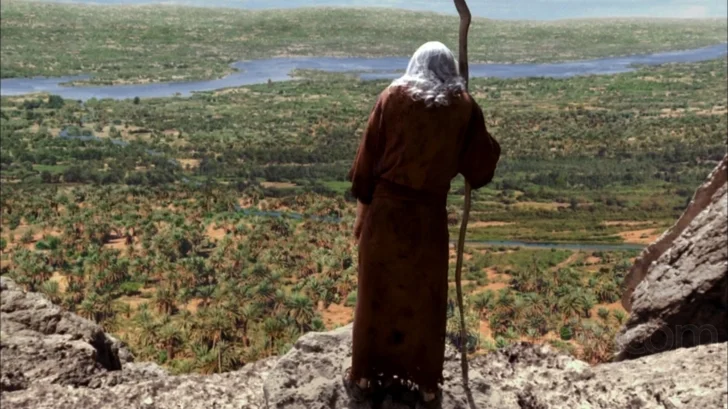The Trembling Wall (Parashat Vayikra)

Every year I bring a group of 8th graders to Israel. And every year, no matter how rambunctious they are, they always bring their best behavior to our visit to the Kotel, the Western Wall in Jerusalem. One might assume they act with respect because they worry that others will admonish them if they are loud. Or maybe they feel humbled by passing through the metal detectors. However, I have always imagined that there is something else at play. Perhaps, they innately know the sanctity of the space. Maybe, the holiness of the Kotel is woven somehow into their DNA, into their identity as Jews.
Countless people have wondered why exactly we put so much stock in the Kotel? Why, for example, has it become the ultimate symbol and referendum on religious equality? Why do most trips to Israel culminate in a visit to these ancient rocks? Why do we choose this location as the place to leave notes on which are written our deepest yearnings?
The Kotel is a symbol of a Judaism long-gone, one that is described in this week’s Torah portion. It is a Judaism of sacrifice, where blood and burning, incense and ashes were the norm. Though there are certainly Jews who wish to return to the sacrificial system, most Jews I know are content with prayer replacing sacrifice and with the decentralized, democratized Judaism we have today. Yet the Kotel, the last remaining vestige of that ancient world, still matters to us. It matters to me. In High School I would often utilize the burgeoning technology of my day to email my prayers to the Kotel and would watch the goings-on in real time on the “Kotel Cam.”
Writing about the importance of treating the Kotel with respect our Rabbis explain:
A person my not enter the Temple Mount with his walking stick, his money pouch, or with dust on his feet, for he should not behave in a lightheaded manner even after its [the Temple’s] destruction (Midrash Tanchuma Vayikra 6).
For them, as for us, it did not matter if the Temple Mount was functioning. Instead what mattered was that it once did. And just as we would not act callously in the shadow the High Priest, we would not behave lightheartedly among the ruins of a once-thriving religious space.
In fact, reverence for the Temple Mount was so important that our Rabbis decreed that the location would forever deserve respect. Seeing that reverence for the Sanctuary shared a verse with a command to keep Shabbat they wrote:
The Holy One, Blessed be He, said, “My Sabbaths you should keep, and My Sanctuary you should revere.” (Lev 19:30). It is coming to compare the keeping of the Sabbath to the Sanctuary. What is the comparison between Shabbat and the Sanctuary? Thus taught Rabbi Chiya Hagadol: Just as keeping the Sabbath is forever, [for it states ‘it is a sign forever’ (Ex 31:17)], so too is revering the Sanctuary forever. (Midrash Tanchuma Vayikra 6).
For the Rabbis, if a verse of Torah has two commands, they must be connected thematically. Thus, they imagined that the link between the command to keep Shabbat and precept to honor the Sanctuary was timelessness. Just as Shabbat would go on forever, even if the Jewish people disappeared, so too would the sanctity of the Temple space, even if it was destroyed.
But why? Why give a pile of rubble our attention and love for all eternity.
The traditional answer is because God sits atop the wall to this day, bemoaning its destruction. In one heart wrenching tale, Rabbi Nathan entered the Temple area and found the last remaining wall, the Kotel, standing (Tanna De’Beit Eiliayhu 30). At first he criticized God for allowing the Temple to be destroyed. But in no time, he heard a response. A voice called out, telling him to press his ring against the wall. Through the ring, Rabbi Nathan felt the wall trembling. Immediately, his eyes were opened and he realized why. God was standing above him atop the wall bowing down and straightening, trembling and weeping. To this day, Jewish folklore assumes at least a part of God remains at that wall and if you pay attention you can still feel the echo of God’s shuckling in the ancient Kotel stones.
But even if God is no longer at the Kotel, I’ve always imagined that a part of God remains there. Like the scent that lingers on the pillow of a loved one after they have left the bedroom, the essence of God remains throughout those stones. God may not dwell as acutely on the Temple Mount today as God once did, but it doesn’t mean that we can’t still sense God around. Those stones are porous. They soak up the Divine essence that was around them. They capture the tears and prayers of centuries of yearning. Their crevices hold secrets, whispered into their cracks in moments of triumph and pain. The stones are more than mere rocks; they are vessels of holiness and memory.
Whether God is atop the wall as the Rabbis teach or not is irrelevant. The Kotel trembles anyways, saturated with our anxieties and aspirations, both mundane and Divine. We can feel them if we listen closely.
For more writings by Rabbi Katz check out his book, The Heart of Loneliness or his blog.




